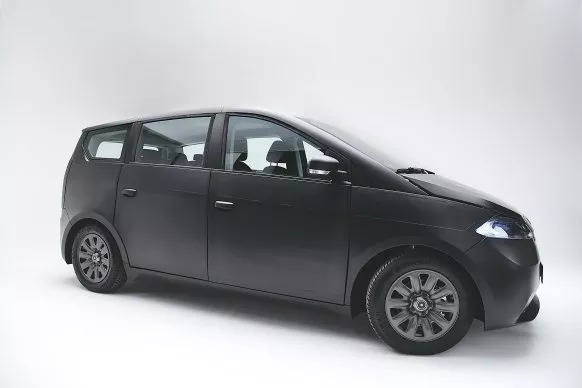CES 2021: Sono Motors unveils second-generation solar car
14 January 2021

From a garage startup to a fully-fledged automotive new-entrant, Sono Motors was at CES 2021 to give an update on its Sion battery-electric vehicle (BEV). It showcased the care with new integrated solar panels adding up to an extra 21 miles (34km) of range per day.
The Sion features 248 polymer-based photovoltaic cells integrated into body panels across the car, including the bonnet, roof and doors. These cells can capture sunlight to help recharge the battery while the vehicle is outside, with the company believing drivers can complete up to 25 miles on solar power alone. However, the vehicle also features a regular BEV battery with a range of 160 miles.
Sion said that based on the average German commute around 17km, the vehicle could potentially be run purely on solar power, bringing down the total cost of ownership (TCO) as a result. Through its technology, the company expects to reduce charging sessions by a quarter.

Sono will launch a roadgoing version in 2022, with a price of around €20,500 including the battery. Sales will be conducted online, with a servicing handbook distributed to interested garages, meaning the company will have no physical locations. This will help keep business costs to a minimum, with savings passed on to customers through the lower vehicle price.
Further savings have been made by removing the ′paint shop’ process, with the car only available in black thanks to its polymer coating.
′We have found a way to deliver sustainable, free power across various transportation applications by replacing the traditional ′paint shop’ process with integrated solar technology. While Sono Solar Technology is cheaper, lighter, and much more efficient than conventional glass-based solar cells, I am most excited about the potential uses that will arise thanks to its incredible flexibility,’ said Jona Christians, co-founder and CEO of Sono Motors.
Solar as a power source
Solar-powered vehicles have been around for some time, but until now these panels are small and only used to charge ancillary items, rather than the vehicle itself. This is because the cells are commonly made of glass, and are therefore quite heavy to place en-masse around the body. Sono Motors has integrated its photovoltaic cells into polymer-based body panels, making them lighter and also able to be shaped geometrically – increasing their surface and therefore efficiency.

The car also features integrated sharing, with drivers able to control who can use the vehicle, and for how long, via an app. There is also a bi-directional charging feature, meaning the car can power most gadgets, or help to trickle-charge another BEV.
An unusual feature of the Sion was the integration of moss in the dashboard, with ambient lighting to accentuate its presence. However, this moss is not alive, and therefore requires no watering or maintenance, its function purely being to provide a ′pleasant indoor ambience’.